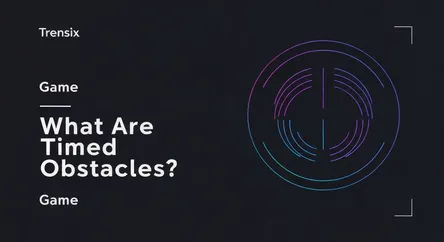Game
What Are Timed Obstacles?

Discover timed obstacles, a core gameplay mechanic that tests player precision, rhythm, and pattern recognition in video games like platformers.
What is it?
Timed obstacles are hazards or barriers in a video game that activate, deactivate, or move on a predictable schedule. Common examples include spikes that retract into the floor, swinging pendulums, laser grids that cycle on and off, or platforms that appear and disappear in a set pattern. This mechanic demands that players observe, learn the timing, and execute their movements with precision to progress safely. It's a fundamental element in level design, particularly in platformer, puzzle, and action games, designed to test a player's reflexes and problem-solving skills.
Why is it trending?
Timed obstacles are a timeless method for creating dynamic and engaging gameplay. They add a layer of rhythm and tension, turning a static level into a living puzzle. In recent years, the revival of challenging platformers and the popularity of 'masocore' games like Celeste have brought this mechanic back into the spotlight. Designers use it to craft intricate, fair challenges that reward mastery and persistence. The simple concept allows for immense creative variation, ensuring that even this classic mechanic can feel fresh and innovative in modern game design, creating memorable and satisfying sequences.
How does it affect people?
This mechanic creates a potent emotional loop for players. Initial encounters often lead to frustration as players fail while learning the obstacle's pattern. However, each failure provides crucial information, making the next attempt more informed. Successfully navigating a complex series of timed obstacles delivers a significant sense of accomplishment and mastery. This cycle of trial, error, and eventual success is highly engaging, fostering skill development and providing a clear measure of a player's progress. It transforms a difficult challenge into a rewarding experience, enhancing player retention and satisfaction.